1. Technology, Coaching and Community
1.1. Problem
1.1.1. Many teachers do not know how to design and support technology-rich learning environments.
1.2. Solution
1.2.1. Coaching, combined with communities of learning, is a highly effective job-embedded PD model.
1.2.2. Most effective PD:
1.2.2.1. is technology rich
1.2.2.2. is delivered through a coaching model
1.2.2.3. is enhanced by the power of community and social learning
1.3. Result
1.3.1. Teachers experience technology as an effective tool for professional learning and develop the skills to powerfully use technology to improve student learning.
1.4. 3 Types of Coaching
1.4.1. Cognitive
1.4.1.1. Thought and perception produce all behavior.
1.4.1.2. Teaching is a constant decision-making process.
1.4.1.3. To learn something new requires engagement and alteration in thought.
1.4.1.4. Humans continue to grow cognitively.
1.4.2. Instructional
1.4.2.1. ICs use a variety of PD procedures to encourage the widespread, high-quality implementation of effective teaching practices, including:
1.4.2.1.1. Holding one-to-one or small group meetings during which ICs can identify how to address their most pressing concerns.
1.4.2.1.2. Guiding teachers through instructional manuals, checklists and other materials.
1.4.2.1.3. Collaboratively planning with teachers to identify when and how to implement effective instruction practices.
1.4.2.1.4. Preparing materials for teachers prior to instruction.
1.4.2.1.5. Modeling instructional practices in teachers’ classrooms and observing teachers when they use interventions.
1.4.2.1.6. Providing feedback to teachers
1.4.2.2. 7 Practices that IC's use:
1.4.2.2.1. Enroll. The teacher chooses whether or not she or he would like to collaborate with the coach.
1.4.2.2.2. Identify. The teacher chooses the teaching practice that he or she would like to learn with the coach.
1.4.2.2.3. Explain. The coach and teacher have a shared understanding of the teaching practice, and have agreed upon an observation protocol or checklist describing the components of the teaching practice.
1.4.2.2.4. Modeling: “You Watch Me” The teacher is ready to begin teaching with the new practice.
1.4.2.2.5. Observe. The teacher is comfortable with the coach observing the classroom practice.
1.4.2.2.6. Explore. The teacher is encouraged to continue using the teaching practice and has identified an area where he or she can improve the way the practice is implemented.
1.4.2.2.7. Refine. The learned teaching practice becomes habitual for the teacher.
1.4.3. Peer Coaching
1.4.3.1. focuses on training teachers to help their colleagues integrate technology into the collaborative online classroom of the future.
1.4.3.2. Peer coaching brings together facilitators and coaches and focuses on three primary pillars:
1.4.3.2.1. Utilizes the communication and collaboration skills needed to build trust and effective collaboration.
1.4.3.2.2. Strengthens coaches’ lesson design skills to help colleagues to improve learning activities so they reflect what they know about collaborative online learning. For many teachers around the world, successful integration of technology means learning to use active, engaging instructional strategies.
1.4.3.2.3. Understands best practices in technology integration so coaches can assist teachers using technology to enrich and enhance student learning.
2. Partnership Learning
2.1. Cooperative Learning
2.1.1. learning as a group
2.2. Reflection Learning
2.2.1. thinking about and reflecting on learning
2.3. Thinking Devices
2.3.1. receive a prompt and then work together as a group
2.4. Question Recipes
2.4.1. encourages dialogue
2.5. Experiential Learning
2.5.1. simulating what is learned
2.6. Stories
2.6.1. enhances content
3. Technological Pedagogical Content Knowledge
3.1. The development of TPACK by teachers is critical to effective teaching with technology.
3.2. The challenges of teaching with technology
3.2.1. It is difficult for teachers to implement technology into their teaching for many reasons.
3.2.1.1. not enough experience with new technologies
3.2.1.2. not given proper training (PD time)
3.2.1.3. time constraints
3.3. Three core components of teaching with technology
3.3.1. content
3.3.1.1. teachers knowledge of the subject matter they teach
3.3.2. pedagogy (PK)
3.3.2.1. teachers knowledge of the processes/practices and methods of teaching and learning
3.3.3. technology
3.3.3.1. a deep understanding and mastery of technology
